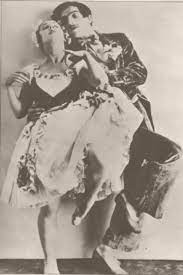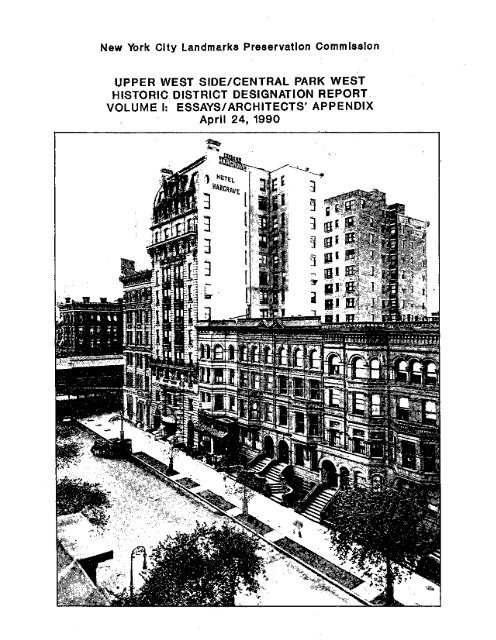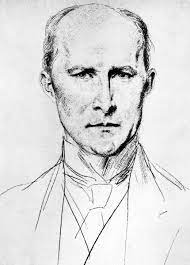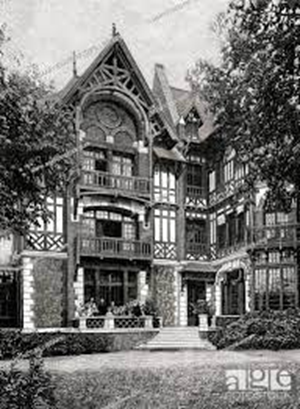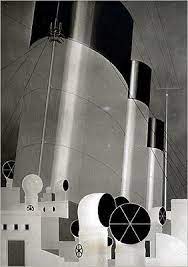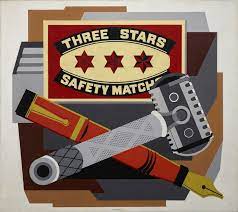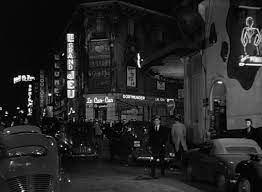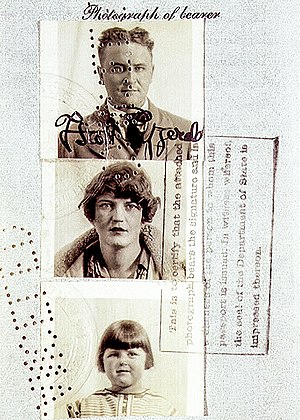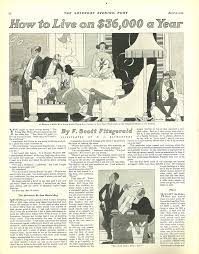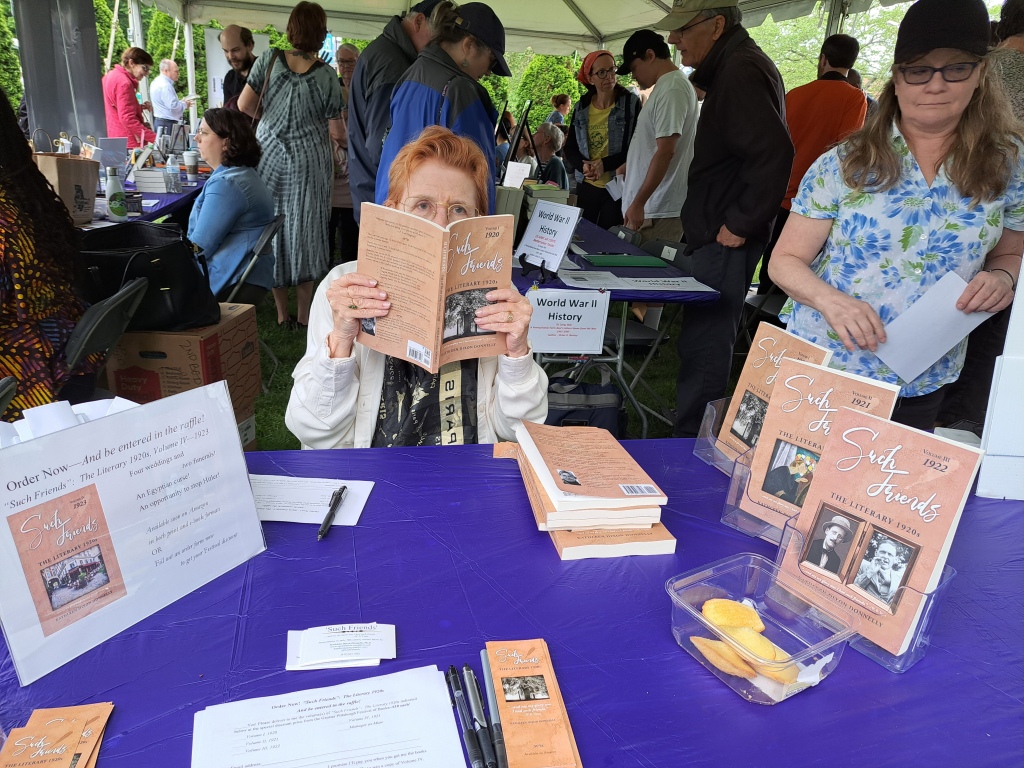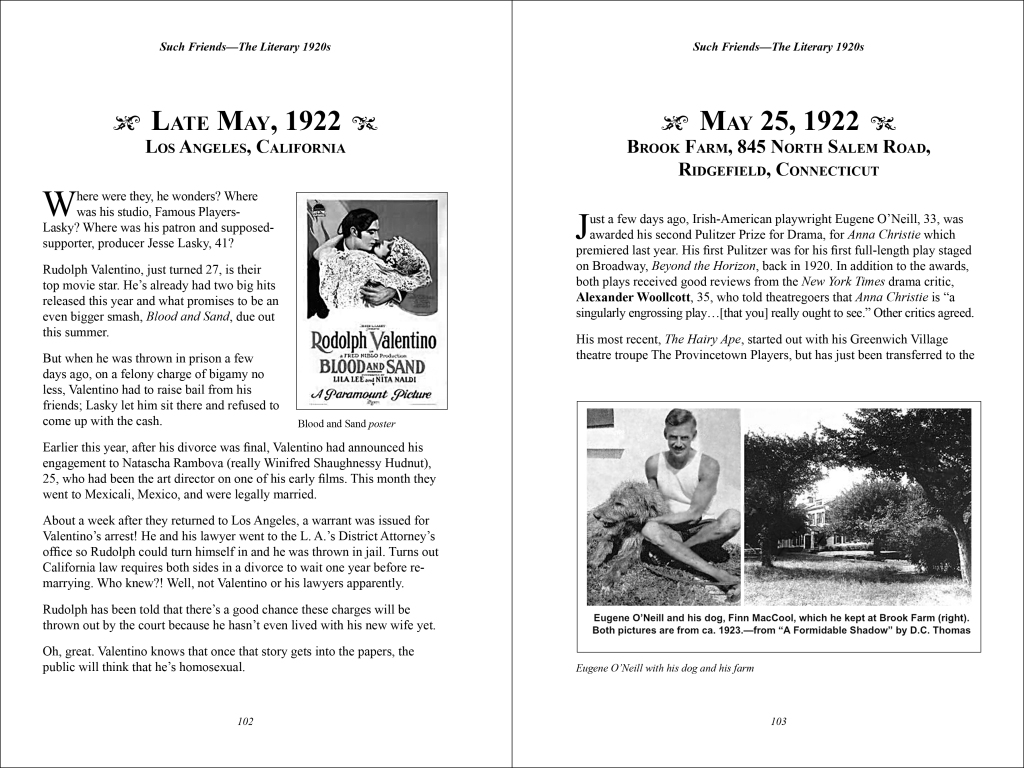At the Abbey Theatre, one long block away from O’Connell Street—up until five days ago known as Sackville Street—the second run of Juno and the Paycock by Sean O’Casey, 44, is coming to an end.

Juno and the Paycock program
When the theatre premiered this, O’Casey’s second play, back in March, theatre director Lady Augusta Gregory, 72, told her co-founder, poet and playwright William Butler Yeats, 59, “this is one of the evenings at the Abbey which make me glad to have been born.”
Now, after its second successful two-week run, in addition to her feelings of pride in the theatre and O’Casey, Augusta is also feeling that this will be a great money-spinner for the Abbey.
The premiere, starring their reliable company regulars—Barry Fitzgerald, 36, as Captain Jack Boyle; Sara Allgood, 43, as his long suffering wife Juno; and Fitzgerald’s brother Arthur Shields, 28, as their disabled war veteran son Johnny Boyle—was such a hit Yeats and Lady Gregory doubled its scheduled one-week run, the first time the Abbey had ever done this.

Arthur Shields
Last month they repeated O’Casey’s first play, The Shadow of a Gunman, for the fifth time.

The Shadow of a Gunman program
Willie and Augusta have no qualms about bringing Juno back again now for another full two-week run—two Saturday matinees!—with the original hit cast. And once again the audiences are packing in.
Lady Gregory wants to have a long chat with young Sean about the possibility of his writing future plays for the Abbey.
“Such Friends”: 100 Years Ago… is the basis for the paperback series, “Such Friends”: The Literary 1920s. Volumes I through V, covering 1920 through 1924 are available at Thoor Ballylee in Co. Galway, and as signed copies at Pan Yan Bookstore in Tiffin, OH, City Books on the North Side, and Riverstone Books in Squirrel Hill, Pittsburgh, PA. They are also on Amazon.com and Amazon.co.uk in print and e-book formats. For more information, email me at kaydee@gypsyteacher.com.
Tomorrow, Saturday, May 11, is the Greater Pittsburgh Festival of Books at the Pittsburgh Theological Seminary in Highland Park. Stop by the “Such Friends” booth in Writers’ Row.
This summer I will be talking about the literary 1920s in Paris and New York at the Osher Lifelong Learning Institute at Carnegie-Mellon University.
Manager as Muse, about Scribner’s editor Maxwell Perkins’ relationships with F. Scott Fitzgerald, Ernest Hemingway and Thomas Wolfe, is also available on Amazon.com and Amazon.co.uk in both print and e-book versions.
If you want to walk with me through Bloomsbury, you can download my audio walking tour, “Such Friends”: Virginia Woolf and the Bloomsbury Group.











